Streets Ahead Interview: Shayna Schulman – Mobile Street Photography
This week, the Women’s Mobile Street Photography Collective (Streets Ahead) is pleased and honoured to feature Shayna Schulman in our interview segment.
Many of you may know Shayna as ‘WitChiWotcha’ on Flickr. Her street photography frequently catches our attention. She has a wonderful ability to capture moments, especially around the streets of where she currently lives in London. We highly recommend a visit to her various galleries.
I have personally met and shared lunch with Shayna in London and she’s a really wonderful gregarious person with a great sense of humour and you will see that being released within her images below. It was a pleasure to spend time with Shayna and such a treat to read this fabulous interview which Gina Costa and Cara Gallardo Weil have conducted. We have updated our questions and changed the format for this interview. I hope you enjoy this as much as we do… (foreword by Joanne Carter).
Over to you ladies…
Please tell us a little bit about yourself and what you do. Have you always been interested in photography?
I was born and grew up in New York. My grandparents gave me my first camera when I was 11 as a present for my 6th grade graduation – perhaps because I loved looking at their travel photos and National Geographic. I clearly remember being so surprised and excited! It was an instamatic square format and I immediately started taking candid photos of my friends and family.
It is still a hobby and it never occurred to me to get an SLR, take a class, study or pursue it in any way. I do wonder what I would be doing if I had because now I am an attitude adjuster … a what? Imagine editing and redesigning outdated thoughts and habits or decreasing saturation of worries and cropping creative or negative blocks. It’s incredibly fun and inspiring working with creatives, often it’s a little boosting of a confidence slider with your favorite tunes playing in the background, and adding a layer of maintaining motivation. It fascinates me how similar my creative process of working with clients is to app stacking.
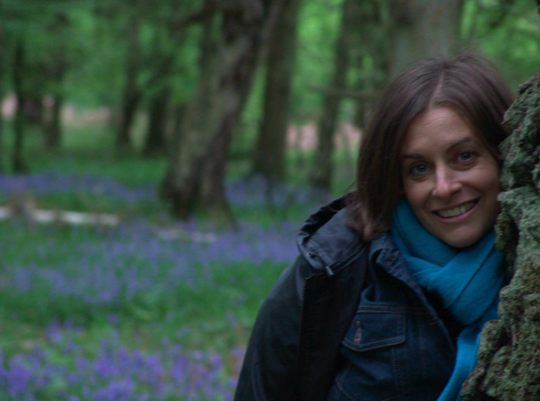
‘Photo of me, taken by a friend’
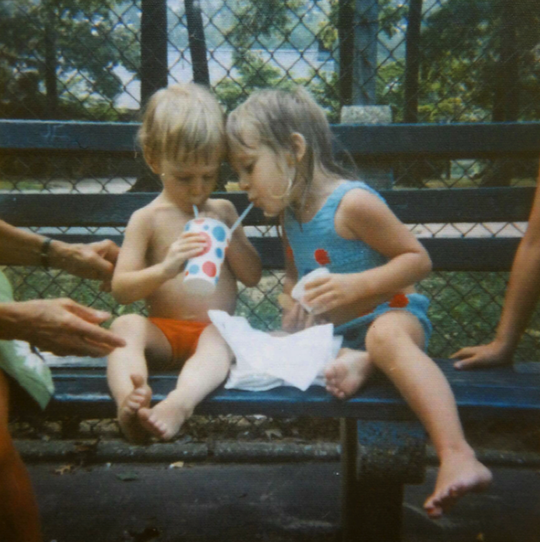
‘Cousins’ – ©Shayna Schulman – From my very first film role aged 11. Scanned with Genius Scan and edited a little with Snapseed
Where do you currently live? Is this a place that gives you energy and inspiration for your street photography or do you have to travel to find it?
Traveling means so much to me and I love taking photos around the world exploring different cultures and environments. It is such a cliché because it is easier to see things in a fresh way when you are in a new place and it could be more challenging for some people in their familiar hometown.
I have been living in Notting Hill, London since 1987 and for me, it is as inspiring and creative as other cities. I love traveling to different parts of London that I’ve never been to, imagining I have my passport to another place where the accents, food and smells are fresh and feeling like I’m on holiday. This can easily happen in my own neighborhood while walking because usually I’m whizzing through on my bicycle.
Does your location, be it a big city, a small town, or the countryside, heavily inform all your photographs in general, not just your street photographs? How do you choose the places that you go to photograph?
Ernst Haas said ‘We don’t take pictures, we are taken by pictures’.
If I am in a certain kind of mood, space or flow, whatever that is, I will find magic inside my home, right outside the door, in the neighborhood, anywhere.
A friend called me a flâneur photographer. From the French meaning to saunter at random, wander without a goal, to move forward without hurrying. Challenging for a New Yorker!
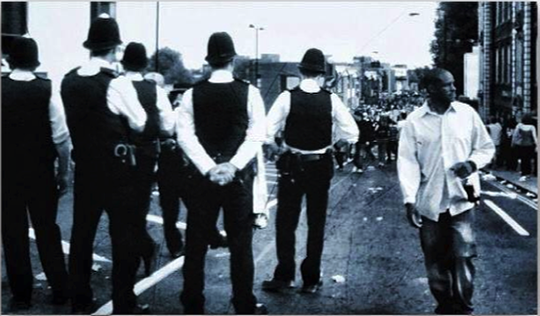
‘Crossing the Line-Up’ – ©Shayna Schulman – Apps used – Snapseed, SquareReady
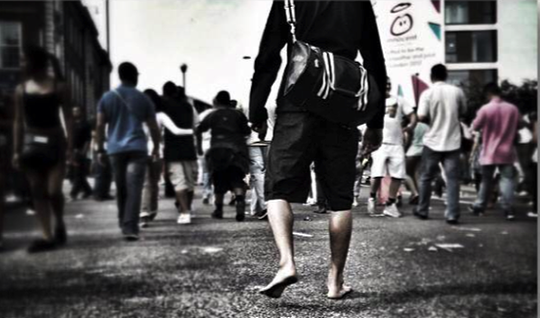
‘Flâneur‘ – ©Shayna Schulman – App Used – Snapseed
What first drew you to street photography and how did you discover it? What is it about street photography that compels you go out to shoot on the street? What are the subjects that are of the greatest interest to you?
My first photos were ‘street photos’ long before I knew there was something called street photography and it feels natural for me. It may have started as hoarding memories, a visual diary documenting my experiences. I’m drawn to paradoxes and juxtapositions, noticing graphic, gritty, contrasts that are intimate, revealing and provocative – it could be people, architecture, beaches or macros in food and nature.
Do you sometimes secretly pose or direct the subjects in your shots or do you always shoot spontaneously? Do you think there is a “right” way to take a street photograph? There are those who feel that a photograph is only good if it follows certain guidelines and fundamentals such as “the decisive moment” or that street photography should never be posed. How do you feel about this?
There are many different styles of street photography and I rebel against ‘rules’ or a ‘right’ way. A good photo makes you and your audience feel something, positive or negative, like it, don’t like it so whatever works for you keep doing it.
If you are asking permission or posing people, I would call it a street portrait. I have always preferred candid over posed and will wait for ‘decisive moments’ because the magic and fun for me is the spontaneity not contrived situations. I like to capture the moments between the moments and gestures. I have an immediate reaction, shoot impulsively and like to be invisible.
If ‘directing’ means using magic to manifest something that is about to happen or already in motion … then sometimes …
How do you feel about shooting from the hip as opposed to looking though the viewfinder?
I’d love to be really good at shooting from the hip, as well as behind me with the ‘selfie’ camera. You are more conspicuous when looking through a viewfinder so I like anything to enhance invisibility. I’ve been using the headphone trigger release without looking. Thanks for the reminder to keep practicing these techniques.
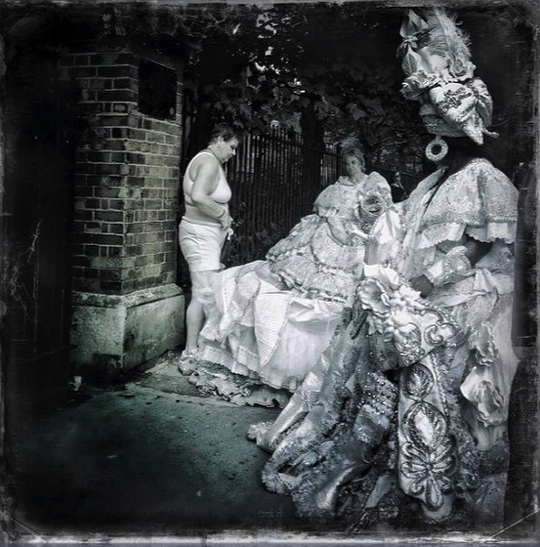
‘Encrusted in the family jewels’ – Notting Hlll Carnival, London – ©Shayna Schulman – Apps Used – Hipstamatic, AltPhoto, Snapseed
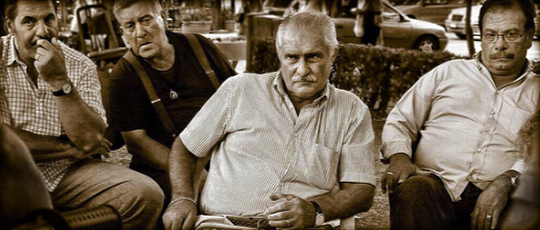
‘Nonverbal Communication’, Palermo, Sicily – ©Shayna Schulman – App Used – Snapseed
These days, the genre raises many questions with regards to the morals and ethics of taking photographs of strangers in a public environment. It is becoming increasingly difficult to shoot freely as a street photographer. What are your thoughts on this?
There are so many surveillance cameras especially in London and we are constantly being photographed without permission and people are either aware of this or in denial. The morals and ethics of this are a much bigger conversation than about street photography which was one of the first uses of photography a very long time ago. Where are all the photos going? What are the chances of us seeing ourselves in these photos? This is why I love iPhoneography. I can be relatively invisible. Personally, I don’t like having my photo taken, especially in public. Ironic, I know.
How do you feel about using model release forms and re-publication of images of the public? Are we morally, if not legally responsible?
Asking for a model release would kill the spontaneity and maybe the mystery for me even if asking after taking the photo. I’ve never done it so I don’t really know. Legally it’s different depending whether it is for editorial or for social media. Morally depends on your morals, which depends on your culture amongst other things.
If you are going to make money off someone’s image, then share some of it with them, if you can find them.
9. Do you have any personal rules when it comes to street photography? For instance, are there any situations that you feel are morally unacceptable?
I don’t want to be consciously thinking or planning when I’m photographing. A situation or moment quickly grabs my attention and it could be ‘controversial’ or provocative which I’ll think about later, whether to publish it or not. There are many photos I don’t take for several reasons, not because I think it’s morally unacceptable. It is so sad that the world has changed on taking photos of children because they are so uninhibited and expressive and now I have to sensor what I take and show.
If I had Google glass or an implant in my head, I’d probably take it. Shoot it now because it won’t be the same again. Heraclitus said ‘You can’t walk in the same river twice’.
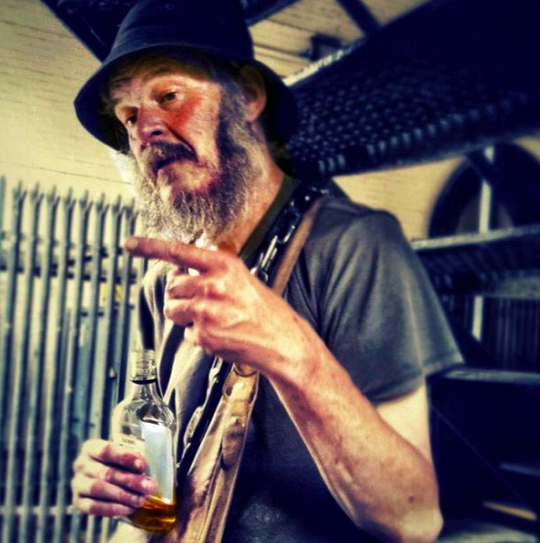
‘Do You See My Point’ – ©Shayna Schulman – Apps Used – Hipstamatic, Snapseed
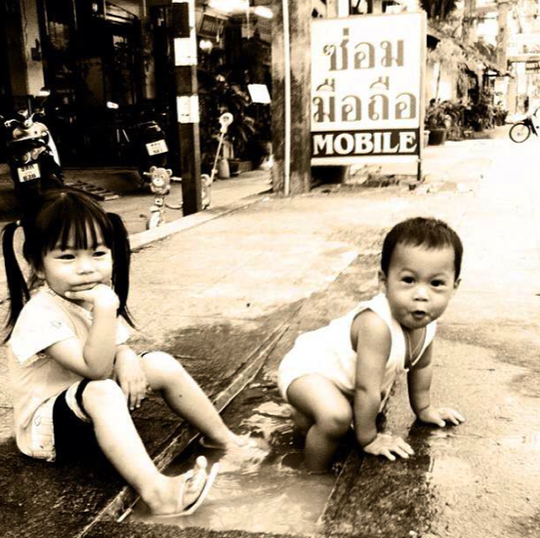
‘Bath Time’ – ©Shayna Schulman – App Used – Camera+
Do you think women street photographers share a different perspective to men? If so, can you elaborate on your thoughts?
Yes – women have different perspectives to men as we all have a different perspective to each other – this makes our vision unique. When I look at photographs, I don’t usually know if it has been taken by a man or a woman. Perhaps if I were to look with that perspective I would notice more.
11. As a woman street photographer, do you find yourself drawn to shooting other women and children or do you prefer to shoot men or is this irrelevant? Would you feel uncomfortable if a male street photographer were to take a photograph of you?
I’m drawn to moments whether male, female or children.
12. Do you think women street photographers are more accepted by the public when taking photographs or do you think they are more likely to be challenged? Do you have any experience of this?
I feel it’s easier as a woman to take photos in some situations where men wouldn’t or couldn’t. People seem less threatened by women street photographers and I feel I can get closer. A big warm smile goes a long way.
Which street photographers have influenced you?
Elliott Erwitts’s humour, irony & sarcasm.
Lisette Model’s provocative portraits.
Andre Kertesz
Helen Levitt ‘If it were easy to talk about, I’d be a writer. Since I’m inarticulate, I can express myself with images’.
Jay Maisel
Steve McCurry’s color palette.
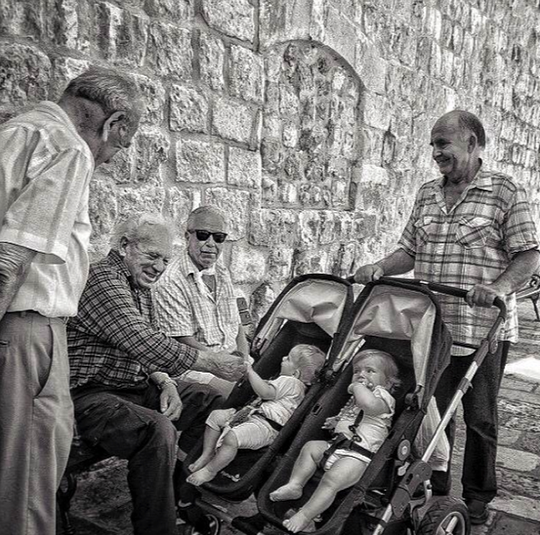
‘Gathering Grandpas’ – ©Shayna Schulman – Apps Used – Camera+, Snapseed
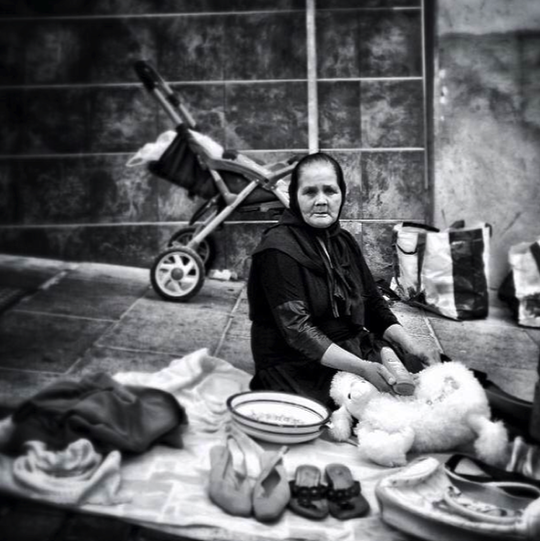
‘Softness from lotion and fluffy toys’ – ©Shayna Schulman – App Used – Snapseed
Which mobile device do you use to take your photographs? Do you post-process your photographs? If so, what are your favorite post-processing techniques/apps? If you post-process on your mobile device, do you usually transfer the images as soon as they have been processed to social sites (in other words, capturing and editing the image while in situ) or do you prefer to have more time to work on your images? Please share some examples of your workflow process.
I use an iPhone 4s to take photos and recently got an iPad mini with Retina display mainly for editing and developing which has been fantastic for my eyes because my eyesight was seriously going downhill editing on the iPhone!
When I’m traveling or on a meet-up or photo-walk I like to shoot, edit and share straightaway. Or shoot with Hipstamtlc/Oggl and share as is. Many times this is a relief compared to waiting until they stack up and making loads of different versions of the same photo and becoming indecisive on which one to share!
Photos go to Photostream so they’re on my iPad and some I like to spend time away from before processing. Sometimes the space between is helpful, sometimes not. Some photos I have an urge to edit immediately and others I don’t know what I want to do with so I let it simmer for ages.
I use the native camera app when I’m moving around a lot because it’s quickest and easiest for me to open. Sometimes Camera+, Retro Camera, PuddingCam or Oggl. Most photos begin and end in Snapseed. Cropping, details, tune image and centre focus to see the potential. I have way too many apps! It will depend if the photo is of people or not, black and white or colour or if it is going to be app stacked. I play around making several versions with ScratchCam, Alt Photo, Lo-Mob, VSCOcam, DistressedFX, Noir. Juxtaposer, Blender, Handy Photo, Big Lens & Square Ready. I also like a few of Jixipix’s Vintage Scene, Grungetastic, NIR Photo.
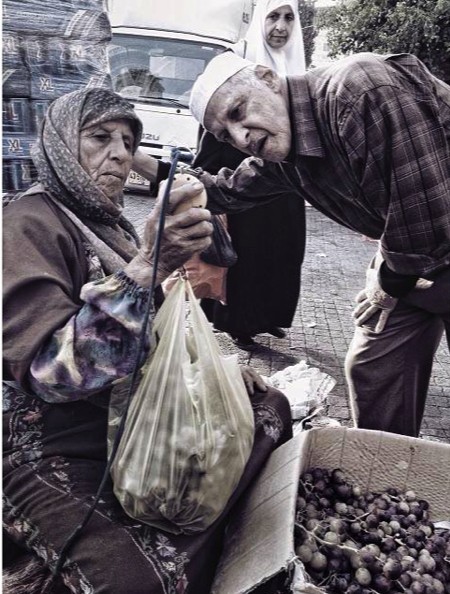
‘Juicy Grapes Weigh More’ – ©Shayna Schulman – Apps Used – VSCOcam, Snapseed
‘I was in the market in Palestine/Jerusalem watching this transaction from the beginning, circling around them, looking and waiting for the moment. It felt very cinematic so I edited in VSCOcam’.
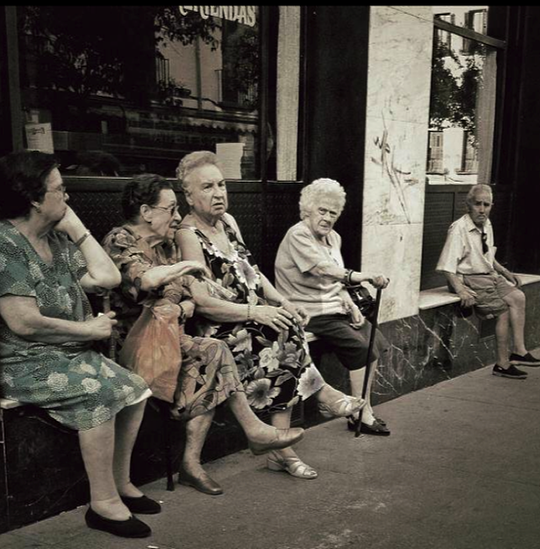
‘One Man and Four Ladies in La Latina, Madrid’ – ©Shayna Schulman – App Used – Snapseed
‘I was coming straight from the airport with a heavy rucksack on my back. I had to stop and dig in my bag for the iPhone for this classic. They were there one week later when I was on my way back to the airport – I had to stop and dig again!’
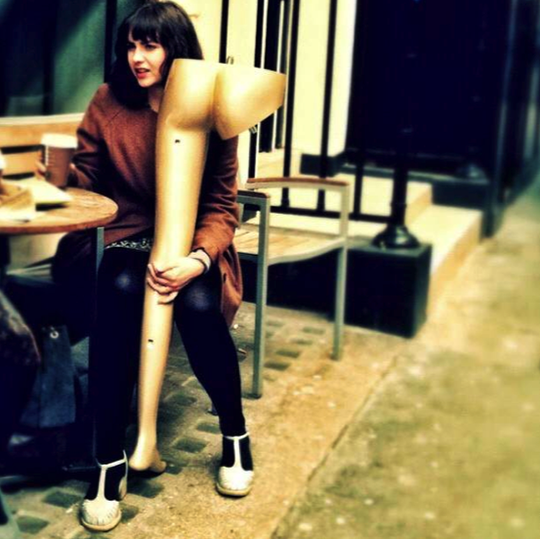
‘What’s the expression: getting a leg over or getting a leg up?’ – ©Shayna Schulman – Apps Used – Camera+, Snapseed
‘This is what I was thinking when I saw this. I wonder what the story is…’
Do you pre-mediate the capture of your images? Do you have a plan or structure in place or do you prefer to act spontaneously? Please share your thoughts about some of your images – what you were thinking, or felt when you shot those photographs.
Occasionally I’ll pre visualise if I’m doing a still life, architecture or nature. I prefer to go out empty and fill up on what’s out there. The more unprepared, without expectations, the more open I am and the more I can see possibilities, potential and magical moments around me and the more creative I am.
It’s an adventure and I’m exploring, looking for stories to tell. A kind of hunting and gathering – I’m interested in the essence of people, moments and environments. I love when I notice and feel something and there’s a dense silence while time distorts, slows down and opens up while the stars align. (That is for anyone who knows about strategies!)
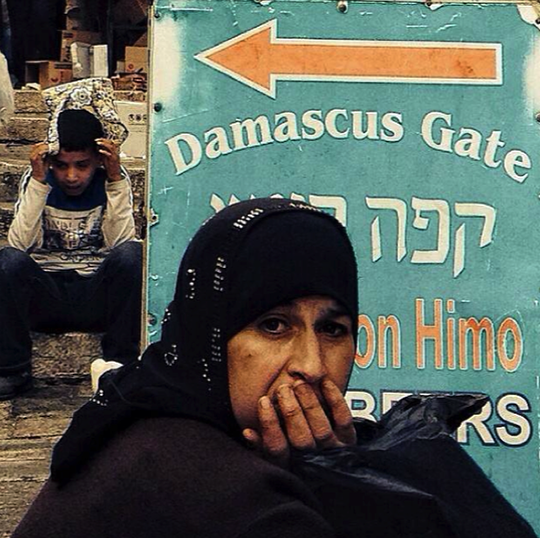
‘Hear no Evil, Speak no Evil’ – Damascus Gate – ©Shayna Schulman – App Used – Snapseed
‘I was walking uphill and saw the woman keeping something in and this boy playing with something and knew eventually…’
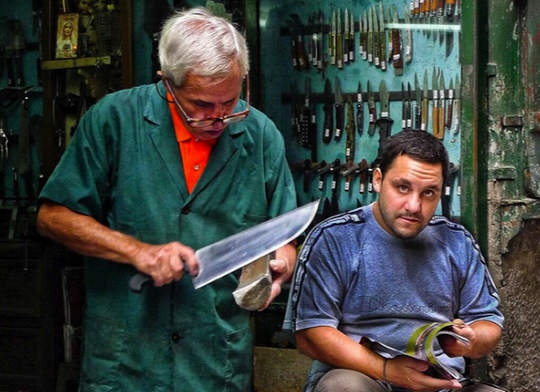
‘Sharpening Skills’ – ©Shayna Schulman – App used – Snapseed
‘I heard the sharpening and noticed the other man reading and wanted him to look up for that Soprano’s moment’
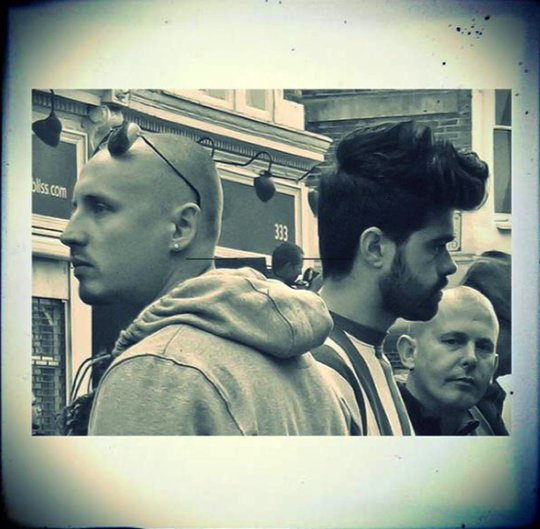
‘Hair Today, Gone Tomorrow’ – ©Shayna Schulman – Apps Used – Luminance, SquareReady, Snapseed
What is the importance of street photography within the entire body of your work? To what extent is street photography a major focus for you?
Street photos have always been the majority of my work. It’s more challenging for me to edit and develop them with more artistic apping – something that I have been working on more recently. I have to consciously think about taking and developing photos of abstract, mundane everyday things or posing some still life. Fortunately I love challenges and am surrounded by many fine artists in this group for inspiration.
Who do you think is the audience for your work? Is this who you want your audience to be? What is it you hope to achieve, either on a personal or professional level, with your body of work?
My current audience is the wonderful Instagram community, Facebook friends and the lovely talented people I’ve met through the groups (especially this one!), Flickr and EyeEm. I want to keep having fun, learning, improving and meeting creative people.
I’m open to possibilities and have been working on interesting projects combining my other work – teaching, coaching and consulting with photography.
What do you think distinguishes your street photography from others in the group?
I have no idea, someone else please share …
Where do you show your work? How has social media played a role in your photography? Which platforms are you most active on?
I have always taken photos for myself and social media completely changed my photography. I started sharing when Flickr came out and also on Facebook around that time. I got an iPhone mainly because of Instagram! Seeing such incredibly inspiring, creative people and the possibilities of app stacking changed my photography again.
Do you have any tips that you would like to share with us? Is there anything else you would like to add?
I am humbled and honored to be a part of this group. Thank you so much Cara and Joanne @theappwhisperer for inviting and interviewing me and for your continued consistent quality. It is a constant flow of yumminess, talent, information, tutorials, connection and community!
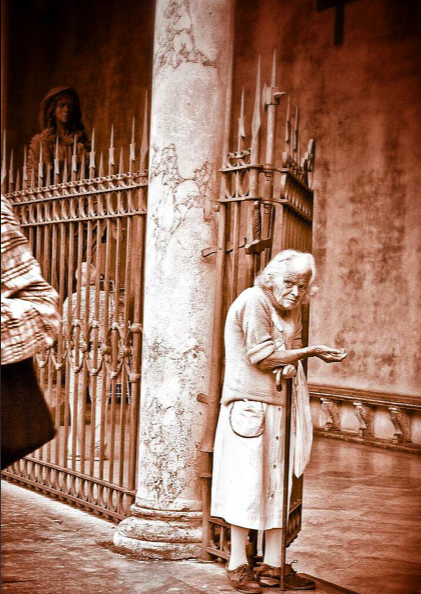
‘Collecting for a Burberry’ – ©Shayna Schulman – App Used – Snapseed
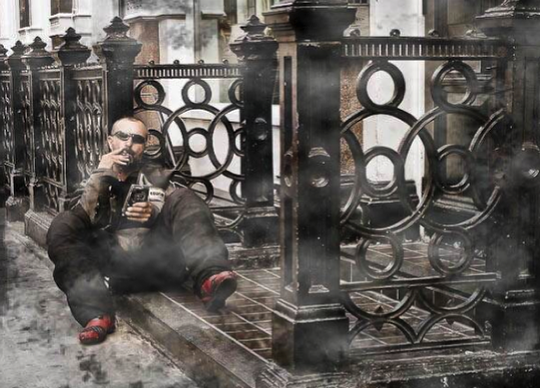
‘Smokin’ – ©Shayna Schulman – Apps Used – Camera+, Image Blender, Juxtaposer
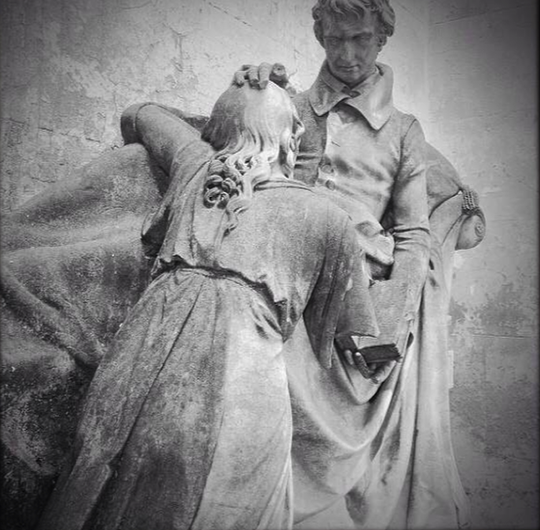
‘A Helping Hand’ – ©Shayna Schulman – Apps Used – AltPhoto, Juxtaposer, Snapseed
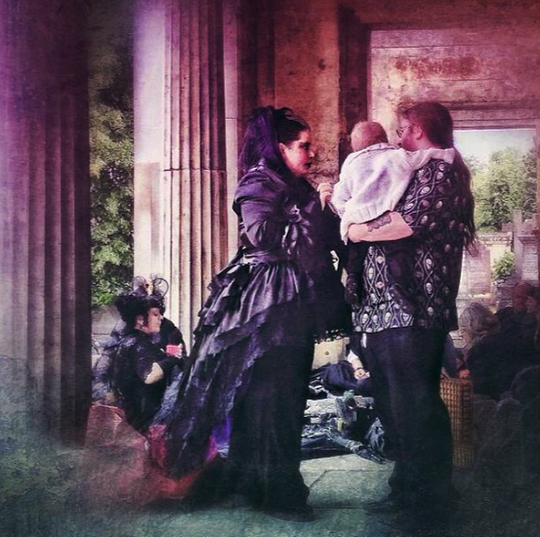
‘Goth Family Picnic’ – ©Shayna Schulman – Apps Used – RetroCam, Juxtaposer, Image Blender, Distressed FX
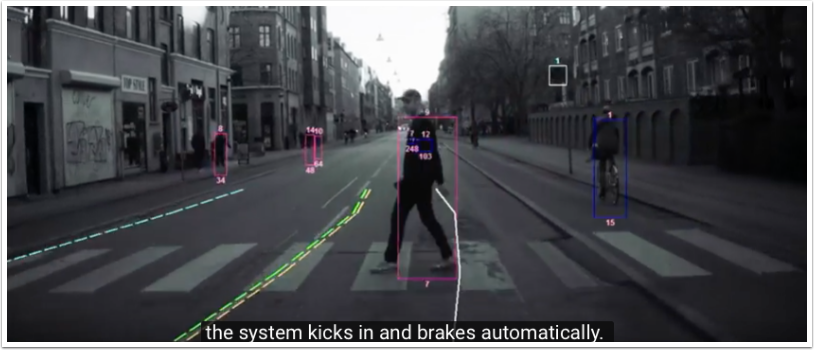
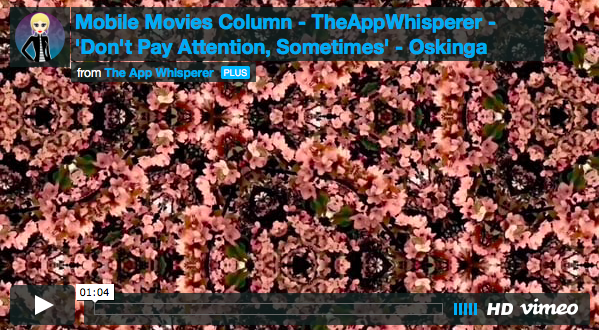
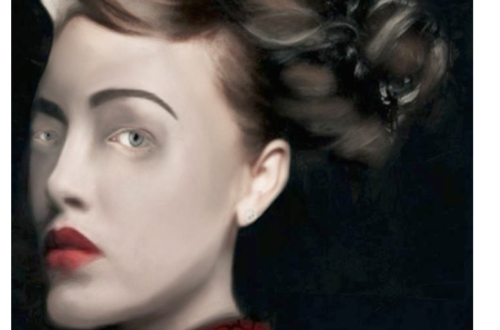
2 Comments
gina costa
Thanks for taking the time to be interviewed Shayna! Love seeing London through your eyes!
Shayna
Thank you Gina, much appreciated✨